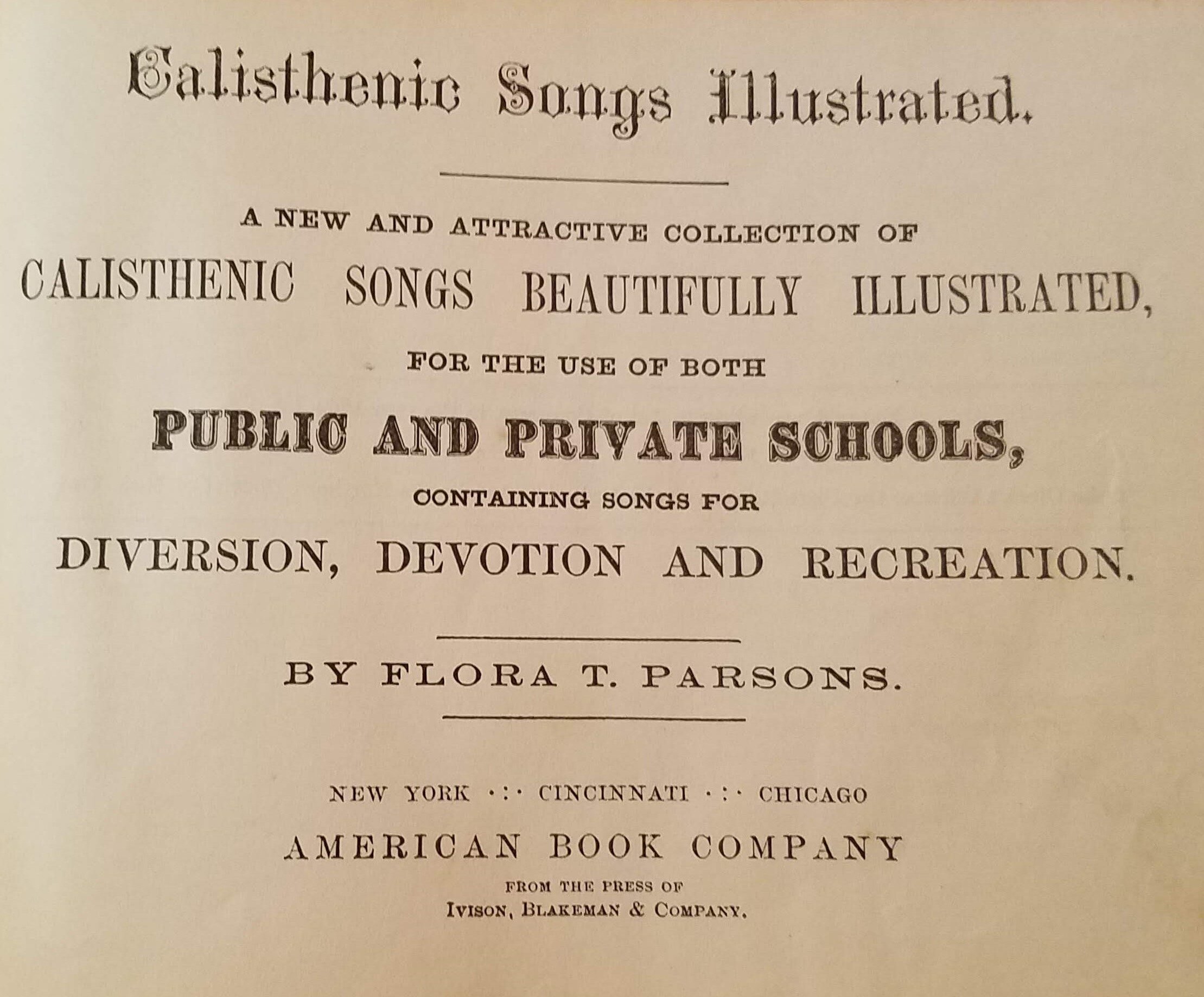You can listen to this episode here:
As noted in this episode, the school’s cash book has an entry on October 16, 1879 for a number of items including “4 Calisthenics Songs” from Ivison, Blakman Taylor & Co. Here’s a sample of the content, and I discussed more on the show.
Ok, up next for the story about the quarry and The Cage. Here are the basics.
As noted, a researcher sent me an image of a building labeled as the Field House at Carlisle. I replied I wasn’t aware of any building with that name. Shortly after, he said he’d found another picture of it, sending me the picture and saying the building was located “in front of the quarry.”
Everett Strong Collection, 14B-03-04, Cumberland County Historical Society, Carlisle, Pa.
Me: I never heard about a quarry at Carlisle.
[Asks Jim and another knowledgeable person. Nothing at Carlisle, Jim provides info about a quarry at a different school]
Me: Tells researcher we don’t think there was a quarry. This exchange follows. I’m the smarty-pants in the blue bubble.
Researcher points out (more politely than I probably would have) that the photo isn’t of Chilocco. Doesn’t look anything like that campus and also the second photo (with the quarry) was identified as being Carlisle. It turns out that he got that photo from the Cumberland County Historical Society, and it’s from the Everett Strong Collection. (Not yet online at CISDRC, but will be soon.)
Aha! Like an idiot, I hadn’t even bothered to look for sources about a quarry at the school before saying confidently that I didn’t think there was one. There was:
The Indian Craftsman, vol. 1, no. 2 (March 1909), p. 46
Ok, so if the quarry is “immediately to the south-east of the athletic field,” then how is that building in this photo identified? And what do the maps say?
Section of map from Jacqueline Fear-Segal, White Man’s Club: Schools, Race, and the Struggle of Indian Acculturation (University of Nebraska Press, 2007), p. 189. The map shows the “buildings of the Carlisle Indian School at closure from ‘Map of General Hospital No. 31,’ U.S. Army Military History Institute, Carlisle, PA. Rescaled and adapted by the author, with cemetery superimposed to scale.”
The caption for the CCHS image was “View of Campus of Carlisle Indian School with stone and gravel quarry in foreground, gravel grading machinery on left, mule drawn cart on extreme right and trade shops and stables in the background.”
Based on the angle of the photo and the location of the quarry (which we now know) and the map (made in 1918), I thought that building behind the quarry must be the “Athletic Care” building identified on the map. However, I had two questions: first, was the CCHS caption information supplied at the time the photo was taken or was it added later by staff, and second, when that that athletic building added (because maybe that was just another trade shop building)?
First, confirmed by Richard Tritt and Blair Williams of CCHS, no the caption wasn’t original to the photo. That’s good.
Second, Jim suggested I look in the 1912 school catalogue, which has descriptions of the buildings. At least that would tell us if the building was there in 1912 or not.
Carlisle Indian School Catalogue, 1912, p. 11.
The Cage??!!!
Ok, so the label on the map is Athletic Cage, not Athletic Care. And it certainly seems like the kind of building that might also have been known as a field house. But, when when was the Cage built?
Searches for “cage” in the publications brought up lots of references to the building (along with birds and animals in cages, etc), but here’s the one about it being opened:
The Red Man & Helper vol. XI no. 31, January 25, 1901, p. 3
So, yes, that’s “The Cage” in photo with the quarry, and it also matches the original photo of the Field House that the researcher sent me to begin with.
So, the Historical Society will have to update its caption, Jim and I have learned a bit more about the athletic facilities, and I’ve been reminded to do a bit of digging (no pun intended, but there it is) before I make definitive statements.
Hope you enjoyed this sort-of athletics-related episode.










